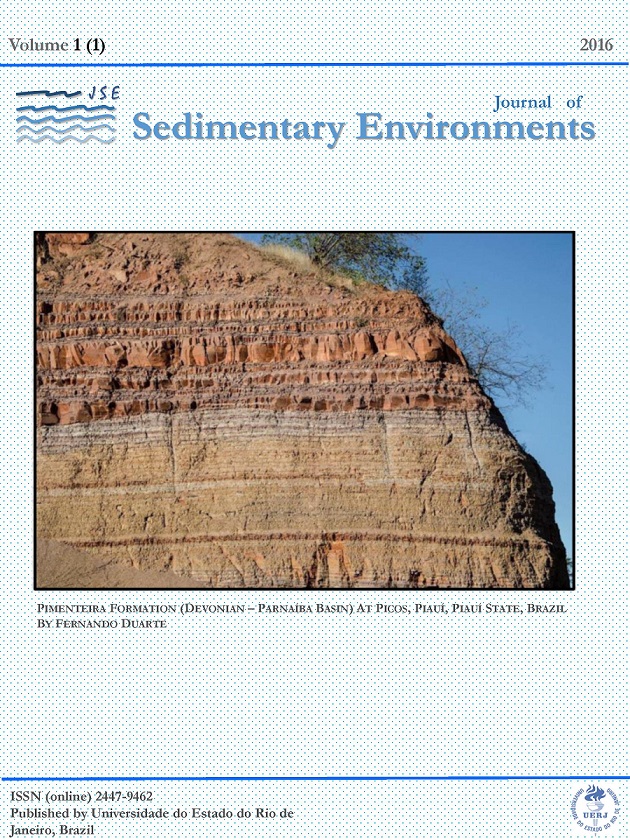LATE HOLOCENE EVOLUTION OF THE NORTHEAST INTERTIDAL REGION OF SEPETIBA BAY, RIO DE JANEIRO (BRAZIL)
DOI:
https://doi.org/10.12957/jse.2016.21924Keywords:
Foraminifera, Stable isotope, Late Holocene, Guaratiba Mangrove, Environmental EvolutionAbstract
This work is based on the study of the core T1 collected in the Guaratiba Mangrove, located on the northeastern margin of Sepetiba Bay. Few studies dealing with the application of benthic foraminifera to study sea level changes during the Holocene have been conducted in Sepetiba Bay, State of Rio de Janeiro, Brazil. In order to fill this gap, the core T1 was studied using textural, geochemical (carbonate, total organic carbon, total sulfur and stable isotopes evaluated in Ammonia tepida) and microfaunal (benthic foraminifera) data, unveiling paleoecological relationships of these organisms and the evolutionary scenario of Guaratiba Mangrove.
Radiocarbon results indicate an estimated age of about 2400 yrs cal BP for the core base. Textural, geochemical and benthic foraminifera data suggest that the study area changed significantly during the last 2400 yrs cal BP. It experienced coastal waves action and shoreface processes in the period between ≈2.400-1.400 yrs cal BP; then, this phase gave place to a shallow marine environment similar to that found currently in internal and protected areas of Sepetiba Bay, between ≈1.400-350 yrs cal BP. Thenceforth, the study area evolved to the present mangrove environment. Factors related to climatic oscillations and the formation, evolution and events of rupture of Marambaia sand ridge influenced the late Holocene evolution of the northeast intertidal area of Sepetiba Bay.
doi: 10.12957/jse.2016.21924
Downloads
Published
Issue
Section
License

Journal of Sedimentary Environments (JSE) is licensed under a Creative Commons Attribution-Noncommercial-Share Alike 4.0 International License.

